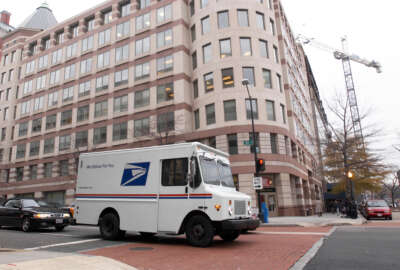
Postal Service’s future uncertain with empty Board of Governors
The last member of the U.S. Postal Service’s Board of Governors vacated his position on Dec. 8, leaving the group — which is supposed to have nine members �...
The last member of the U.S. Postal Service’s Board of Governors vacated his position on Dec. 8, leaving the group — which is supposed to have nine members — completely depopulated. That’s never happened before, and it’s leaving the USPS’ future uncertain.
“Because this is an unprecedented situation, in some ways we don’t know exactly what’s going to happen after Dec. 8,” Charles Crum, director of Operations Research at the Postal Service Office of Inspector General, said on USPS and its Future Month. “But what we do know is there are a number of important duties that can’t legally be done without the presidentially appointed governors.”
This won’t affect the day-to-day operations of USPS; instead, it will be an obstacle to major management and oversight functions. The list of things the Postal Service cannot do without its Board of Governors includes:
- Altering the compensation of the postmaster general or deputy postmaster general.
- Removing or replacing the postmaster general or deputy postmaster general.
- Changing postal rates, fees or product classifications.
- Introducing new products.
- Appointing a new inspector general.
- Issuing the IG’s semi-annual report to Congress.
- Hiring an accounting firm to audit financial statements.
There are supposed to be nine governors on the board, along with the postmaster general and deputy postmaster general, both of whom are hired by the governors. The governors themselves are appointed by the President and must be confirmed by the Senate.
And that’s where the problem lies: there are currently six outstanding nominations for the USPS Board of Governors dating back to 2010 that the Senate has not moved on.
Crum said the postmaster general and deputy are operating under “temporary emergency committee,” which freed them from the standard requirement of a six-person quorum, and allowed them to operate with only one governor.
“This is a particularly important time that the Postal Service needs the kind of strategic direction and guidance that a fully staffed and diverse, knowledgeable board could provide,” Crum told Federal Drive with Tom Temin. “It is ironic that this is the time the Postal Service probably most needs to get a strong, independent board with diverse knowledge, and they’re down to one person, and could shortly be down to zero people.”
The diverse knowledge is especially important in the current postal environment. USPS continues to adapt to the internet, as well as trying to embrace new technologies like drones. It also has increased competition from — and Crum said a very complicated relationship with — private companies like FedEx and Amazon.
“The Postal Service, it’s very interesting the relationship it has with the other carriers,” he said. “For example, FedEx is a major supplier of the Postal Service, taking care of the vast majority of its air transportation. But in addition, the Postal Service does last-mile delivery for a very large portion of FedEx’s small ground delivery volume. With Amazon, the Postal Service also delivers a very high proportion of last-mile delivery for those pieces. So there’s a very close relationship with all those companies that is quite complicated.”
That’s why Crum said the Postal Service would benefit most from governors with diverse private industry experience. They should have expertise in subjects like unmanned vehicles, human capital or financials.
But attracting people to the Board of Governors is not an easy task.
Much like the rest of the federal government, there is a substantial pay gap between the public and private sector for the same positions. The USPS Board of Governors requires two days of work per month, functions very similarly to a business’s board of directors, and pays $30,000 per year. A comparable position at a Fortune 500 company, Crum said, could pay as much as $255,000.
Copyright © 2024 Federal News Network. All rights reserved. This website is not intended for users located within the European Economic Area.
Daisy Thornton is Federal News Network’s digital managing editor. In addition to her editing responsibilities, she covers federal management, workforce and technology issues. She is also the commentary editor; email her your letters to the editor and pitches for contributed bylines.
Follow @dthorntonWFED





